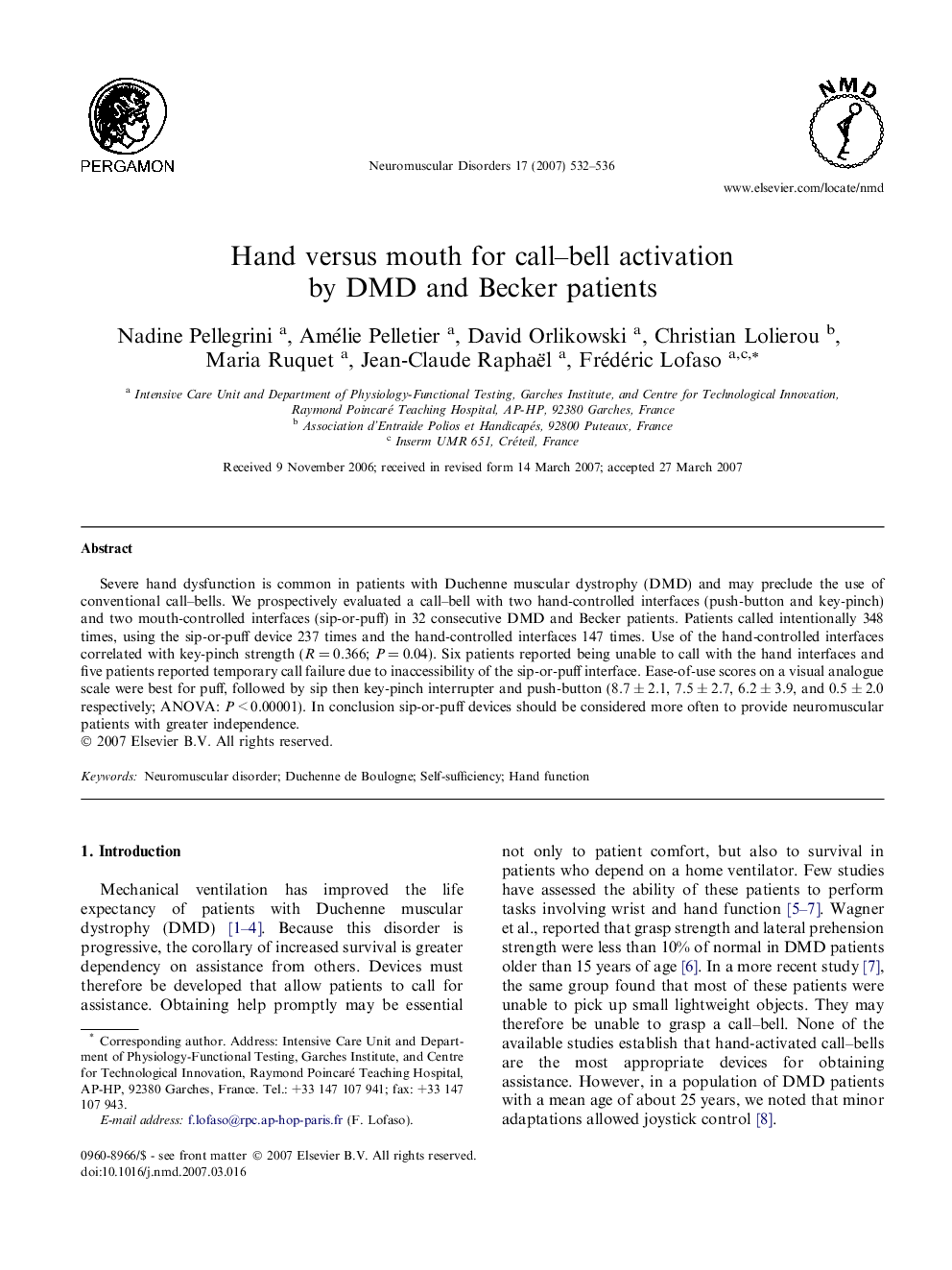| Article ID | Journal | Published Year | Pages | File Type |
|---|---|---|---|---|
| 3081748 | Neuromuscular Disorders | 2007 | 5 Pages |
Severe hand dysfunction is common in patients with Duchenne muscular dystrophy (DMD) and may preclude the use of conventional call–bells. We prospectively evaluated a call–bell with two hand-controlled interfaces (push-button and key-pinch) and two mouth-controlled interfaces (sip-or-puff) in 32 consecutive DMD and Becker patients. Patients called intentionally 348 times, using the sip-or-puff device 237 times and the hand-controlled interfaces 147 times. Use of the hand-controlled interfaces correlated with key-pinch strength (R = 0.366; P = 0.04). Six patients reported being unable to call with the hand interfaces and five patients reported temporary call failure due to inaccessibility of the sip-or-puff interface. Ease-of-use scores on a visual analogue scale were best for puff, followed by sip then key-pinch interrupter and push-button (8.7 ± 2.1, 7.5 ± 2.7, 6.2 ± 3.9, and 0.5 ± 2.0 respectively; ANOVA: P < 0.00001). In conclusion sip-or-puff devices should be considered more often to provide neuromuscular patients with greater independence.
